UNIVERSAL ACHROMATIC MICROSCOPE CONDENSER
MAKER:JAMES SWIFT & SON
c.1900
Please Click On Any Picture for a Larger Version
DESCRIPTION:
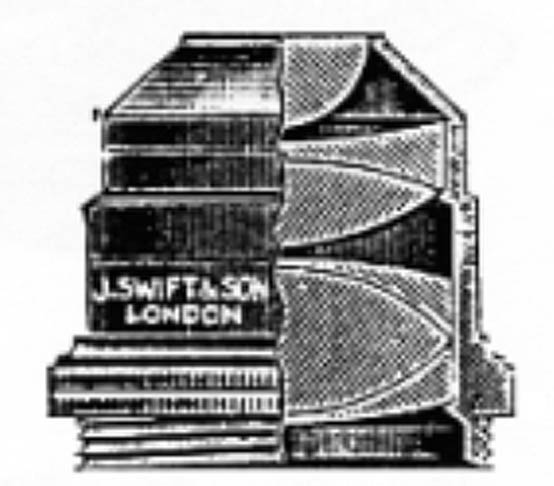

This is the famous Swift Universal Achromatic Condenser complete with all its attachments. The optical portion is the multilensed "Paragon" condenser(left). The optical condenser is a press-fit to the rest of the parts of the instument. It has a removable hemispherical lens on top, again by press-fit, which when removed, reduces the NA to about 0.45 but allows the condenser to be used with low power objectives. In addition, a diffuser top is supplied to replace the top element to ensure even lighting. A blue tint filter is provided to be screwed on to the bottom of the optical casing when using artifical light from e.g. an oil lamp.

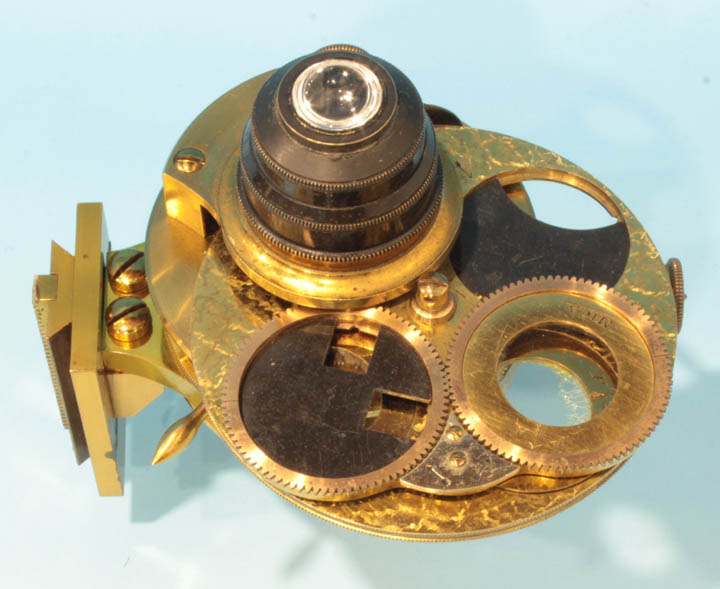
Sitting just beneath the optical are two frames one on top of the other. The top frame carries two revolving brass cells adjacent to each other. In the images to the left, one aperture is hidden(in the optical axis)and the other is forward at D
. This forward aperture, (also seen in the front right of the image to the on the right), typically carries a mica disk for augmenting colors in polarized light.
The other aperture can carry any of the included oblique stop inserts, as shown in the front left of the image to the right.
Either of the two revolving apertures can be brought into the optical axis, stopped in their proper position by means of a spring catch. When thus arranged, the aperture carrying, for instance, the mica disk, may be rotated by the other aperture as the edges of both are geared together. These two apertures can also be moved completely out of the optical axis as the frame is rotated (right).
Under the 2-aperture frame is a round disk of apertures(E). This disk can carry the included blue and red selenite inserts, as well as two other inserts such as the dark ground stops. Beneath the lower larger disk is an iris diaphragm which is controlled by a lever(B
). This entire assembly fits into the top of the substage ring, whose height is adjusted by rack and pinion using the knurled knob on the righthand side of the substage.
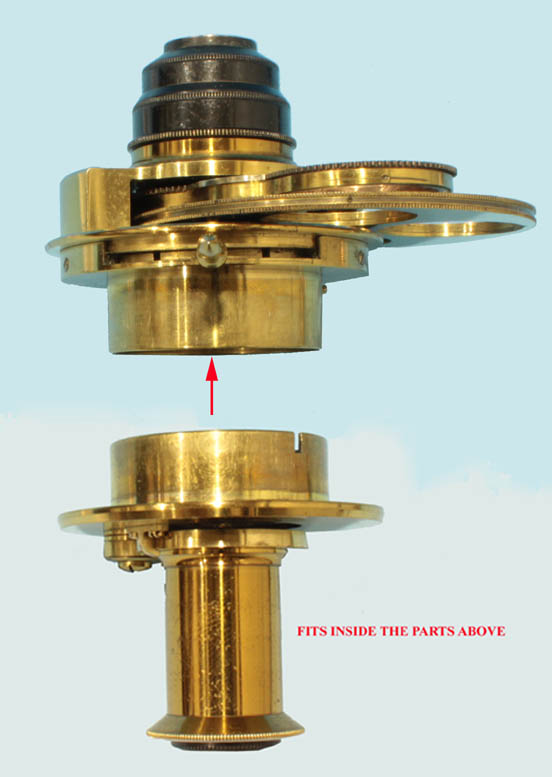
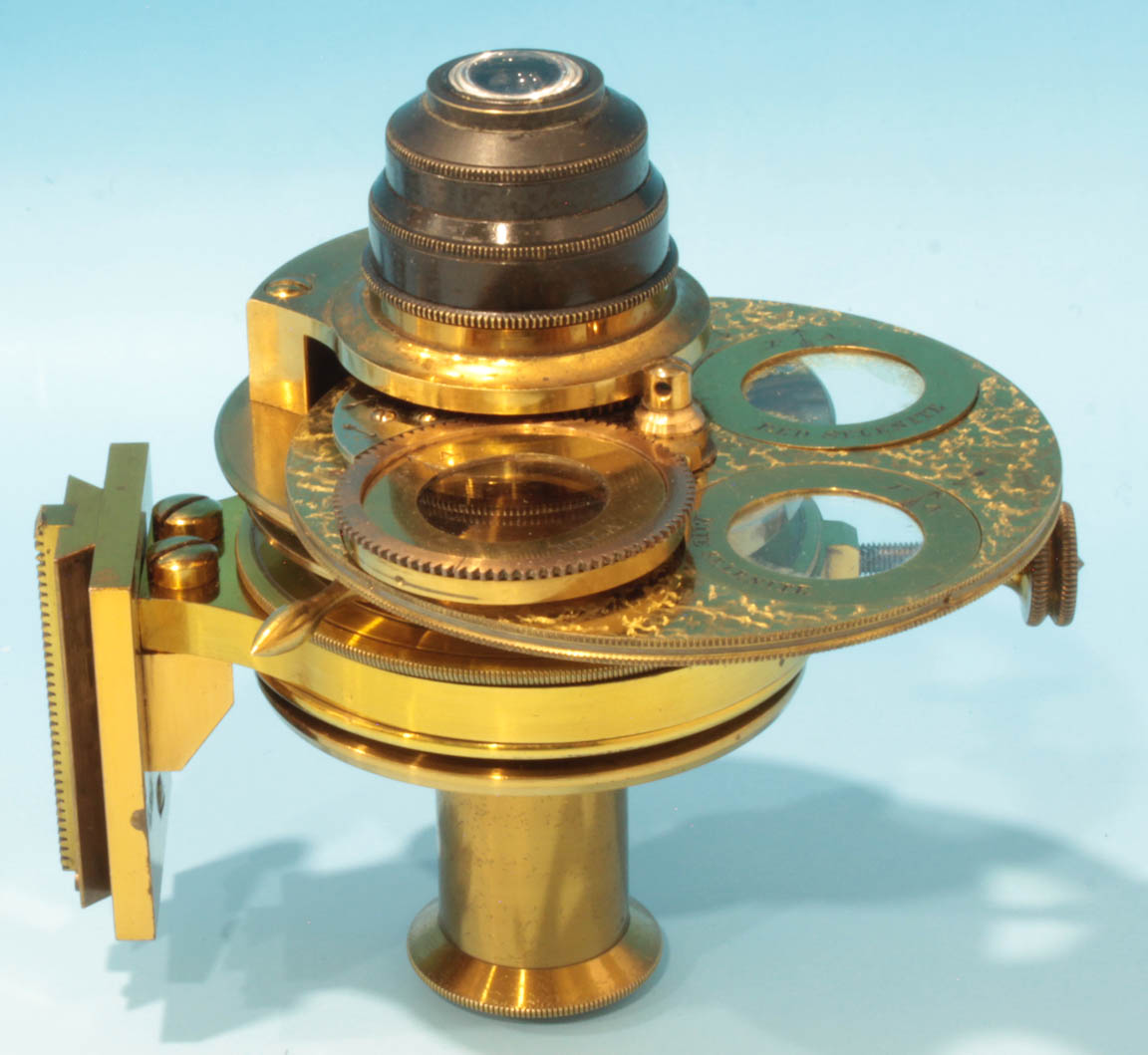
A polarizer assembly is supplied which is inserted under the substage ring and fits inside the barrel of the rest of the condenser, aligned by a slot which fits over a screw on the inside of the barrel of the part inserted from above; the substage ring is then sandwiched
between the two parts. The polarizer is on an arm and can be swung in and out of the optical axis as desired. It is rotated via a knurled edge on the bottom flange.
HISTORY OF THE SWIFT UNIVERSAL CONDENSERS:
THE HALL CONDENSER:
This condenser owes its beginnings to W.H. Hall, a Fellow of the Royal Microscopical Society who published its design in the Society's Transactions in 1868. The original form was made by Swift to fit into a fitting under the stage. This condenser featured a field lens of blue-tinted glass for use with an oil lamp. In fact, it was referred to as the Swift Universal Achromatic Tinted Condenser
.
It had a built-in rack and pinion focusing mechanism via a knurled knob on a long stem. This moved the optical elements along with a slide with dark ground stops just below the optical elements. Unlike later models, the rest of the mechanism including the revolving disks were fixed below, so that the distance of them from a specimen slide would vary with focusing the condenser. There was a single large rotatable disk that carried four items: a disk of apertures, a disk of selenites, variable shutter for oblique lighting from one direction, and
a rotatable tube with special oblique lighting useful for observing diatoms.
There is a cap with pinhole for the optics for centering. An example of this condenser was presented to the Royal Microscopical Society by James Swift himself in May of 1868.
The elements of this condenser include:
A. The Optical portion includes two or three planoconvex lenses. The top element is easily removed for lower power work.
B. Rack and pinion adjustment of focusing.
C. A slide close to the optical elements containing different size stops for dark ground illumination.
D. The large disk that carries elements E thru L.
The elements carried on D include:
E. A rotating tube which carries three orthogonal slits suitable for oblique illumination from more than one direction used especially when observing test diatoms.
F. A disk of 7 graded apertures.
G. A polarizing prism
H. A wheel containing two selenites and one empty slot.
I. An adjustable oblique light shutter.
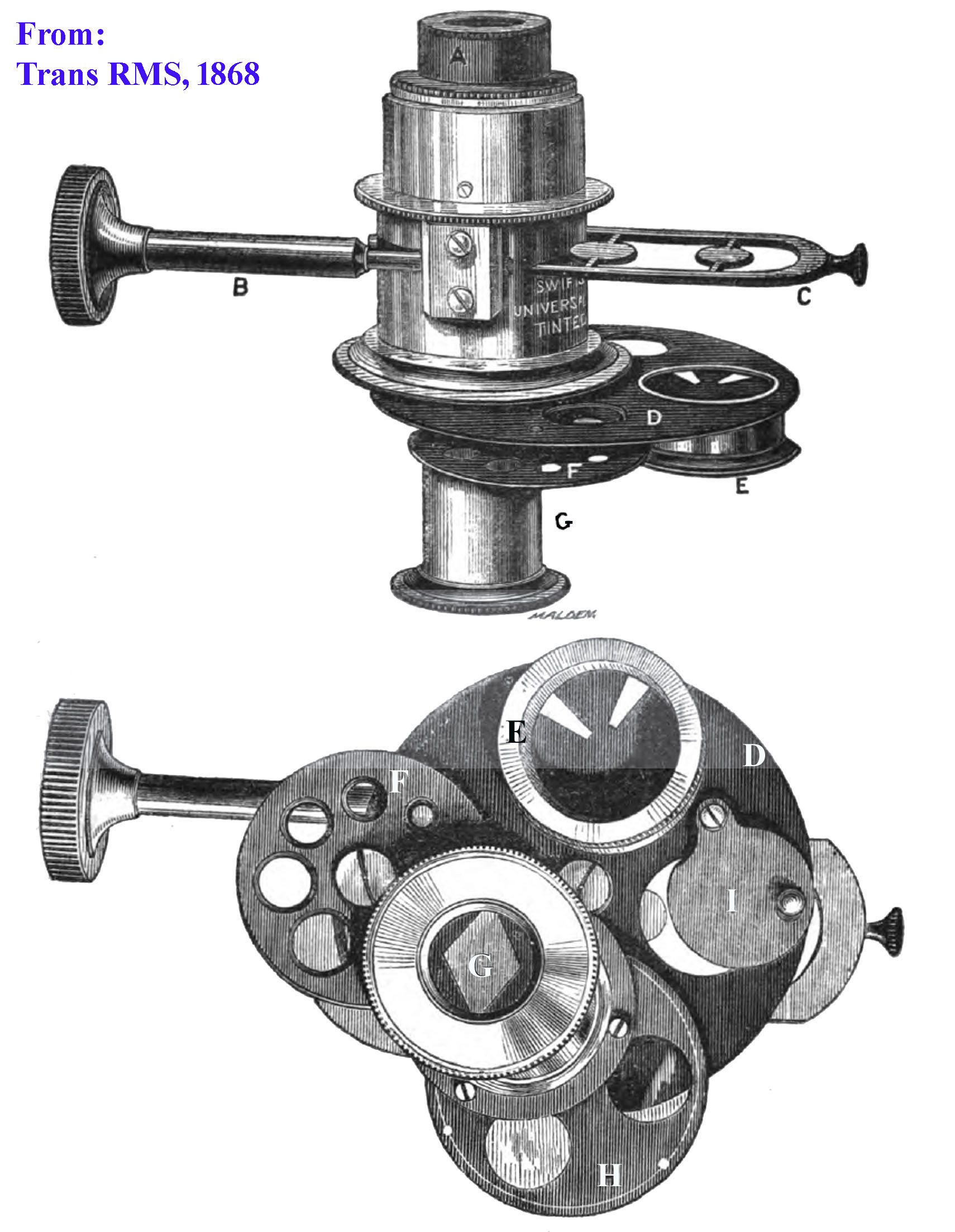
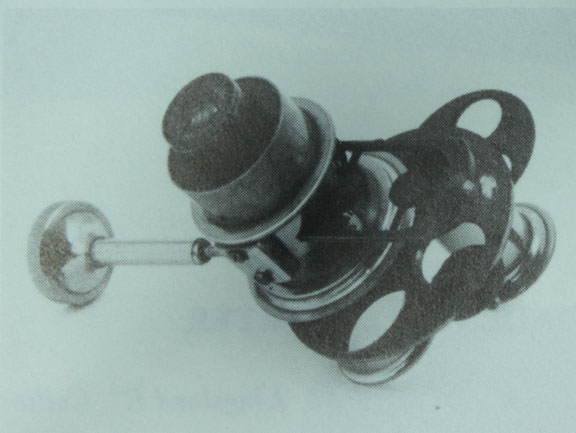
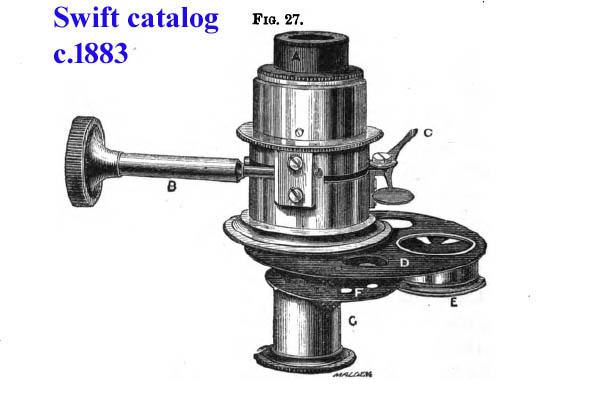
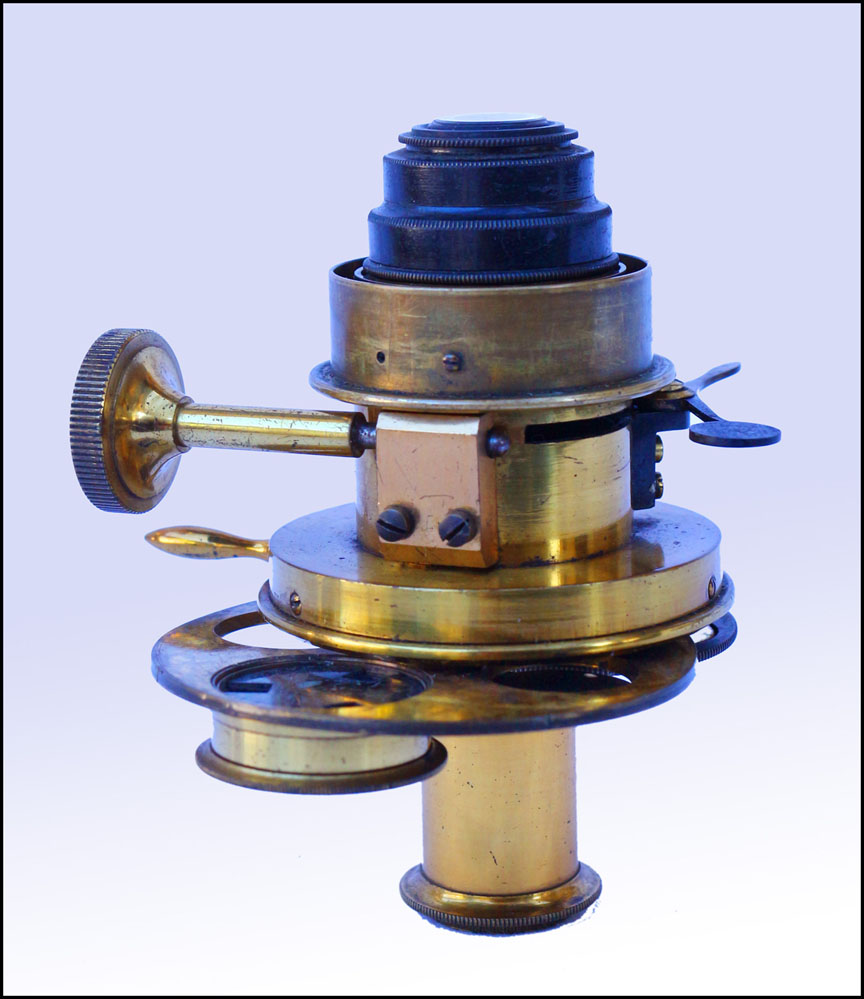
It should be noted that although the Hall condenser was first described and sold in 1868, it was still offered by Swift in the 1910 catalog despite the offering of the improved Swift Universal condenser model since 1874. The only change in the Hall condenser, also called the Popular Achromatic and Tinted Condenser
was that after 1870, as seen in the 1874 and later catalogs, instead of a slide of dark ground stops, a lever operated group of stops was provided (C in the engraving). According to E.M. Nelson, the Hall type of condenser was no longer sold as of 1911.
THE SWIFT UNIVERSAL CONDENSER:
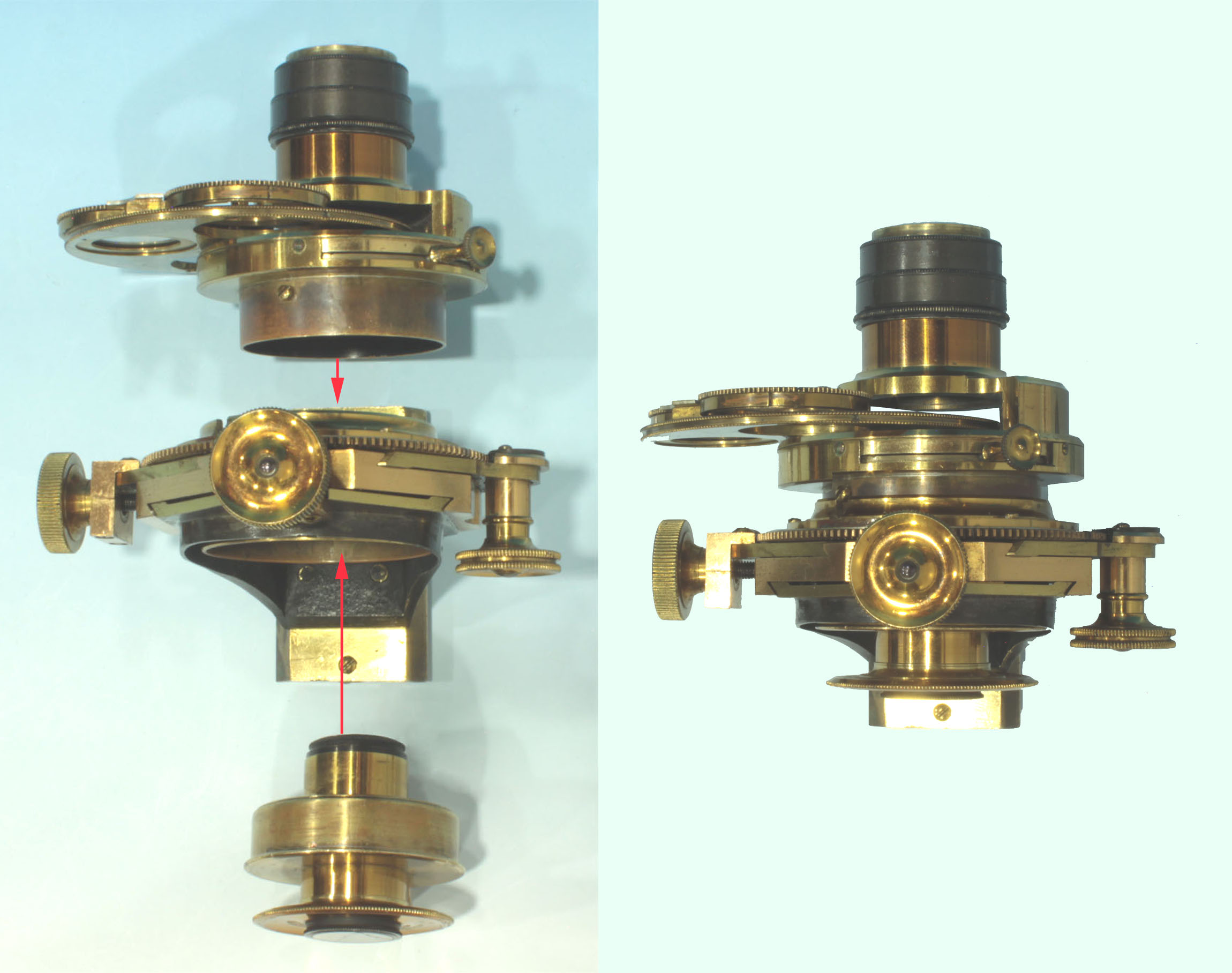
Swift improved most of his microscopes soon after the invention of the Hall condenser. He utilized a substage ring fitting on his microscopes that itself focused by rack and pinion, eliminating the need for an integrated focus within the condenser.
This substage fitting was also centerable and in some of his stands rotated via rack and pinon with calibrated graduations for rotation. According to E.M. Nelson, this, the Swift Universal Condenser
was introduced in 1874 (Nelson, 1912). With this new version, the condenser disks with apertures were now located closer to the optical part. Instead of a wheel of stops, an iris diaphragm was placed under the large lower rotating disk, which could hold, for example, 2 selenites, a dark ground stop, and an oblique stop. The upper frame held only up to two inserts; for example a mica disk and another selenite or oblique illumination stop. These aperture cells in this upper plate were geared to each other so while one is in the optical axis, the other one can be used to rotate it. The polarizer on this version was a separate accessory, sliding into the substage ring from below, while the rest of the condenser assembly slides in from above. In this the earlier version, the polarizer is fixed in its mount and the mount must be removed to take the polarizer out of the optical axis, as in the example with the Captain Perry-arm microscope. The slightly later version an example of which is fitted to the Paragon Microscope in this collection, the polarizer fitting would slide in from below, but the polarizer housing could be turned out of the optical axis, eliminating the need to remove it. This version of the condenser, which fit the Paragon and Swift Challenge models, actually has a smaller diameter than the substage ring, and instead fit inside the bottom of the condenser housing above. It does not fit the Perry Arm microscope however, because the substage ring is too thick to allow the polarizer to reach the inside of the top condenser housing. The optical part of this condenser consists of three planoconvex elements of successivly smaller diameter. The top element is a a single planoconvex lens and was attached by press-fit, and therefore easily removeable, which would configure the condenser for use with lower power objectives. For this configuration, a frosted glass top was provided to diffuse the light from the lower elements if desired. The housing of the bottom of this stack of optical elements was threaded to accept a blue tint filter, if desired. This filter would be used when lighting was provided by an oil lamp to adjust the color of the yellow light to a color closer to natural lighting.

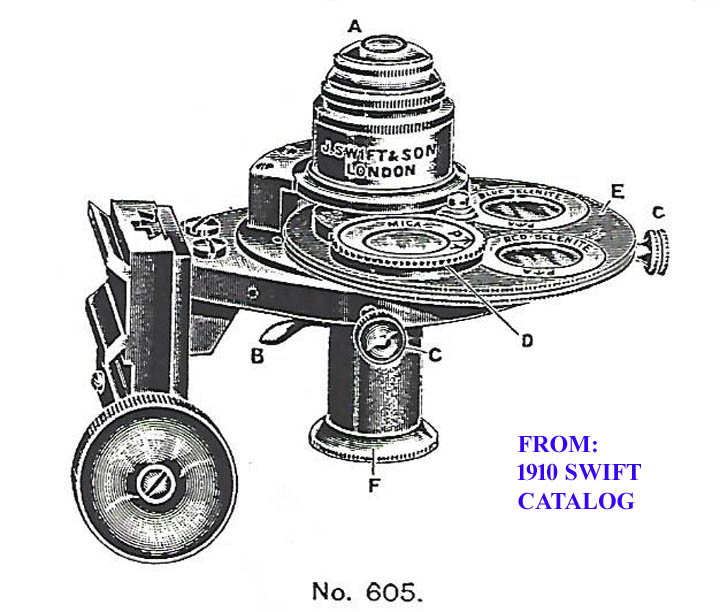

LATE FORM CIRCA 1910:
The version of the Swift Universal Condenser as shown here was offered in the 1910 Swift catalog. It has the polarizer again fitting from the bottom of the substage housing, but as noted above, actually fitting inside the upper condenser housing, rather than the substage fitting itself, the whole arrangement forming a sandwich
around the substage ring. The polarizer is on a hinge so it can be thrown out of the optical axis at will without the need to completely remove its fitting from the substage. For the first time, it had the upgraded Paragon
achromatic condenser.
In the illustration to the right:
A. Is the optical portion.
B. Is the lever controlling the iris diaphragm.
C. Are the centering controls of the substage.
D. Is the upper frame carrying two revolving aperture cells, geared together by fine teeth, one of which is shown at D while the other is under the condenser, so that a revolving motion may be given to either acting on the other; one of these carries a mica plate, the revolution of which over the selenite films gives a great variety of color-tints with polarized light. The other serves to receive oblique light disks which can be rotated by the same means.
E. Is a revolving disk with four apertures, each of which can accept an insert, including any of a series of three central stops for darkground illumination, a blue-tinted filter, a ground glass diffuser, or either of two selenites for the polarizing apparatus.
F. Is the polarizing prism mounted on an eccentric arm so as to be brought under the axis of the condenser when in use, and moved out of the optical axis when not in use.
This condenser was priced at 10 pounds in 1912; this would be about $2000 in 2023 money.
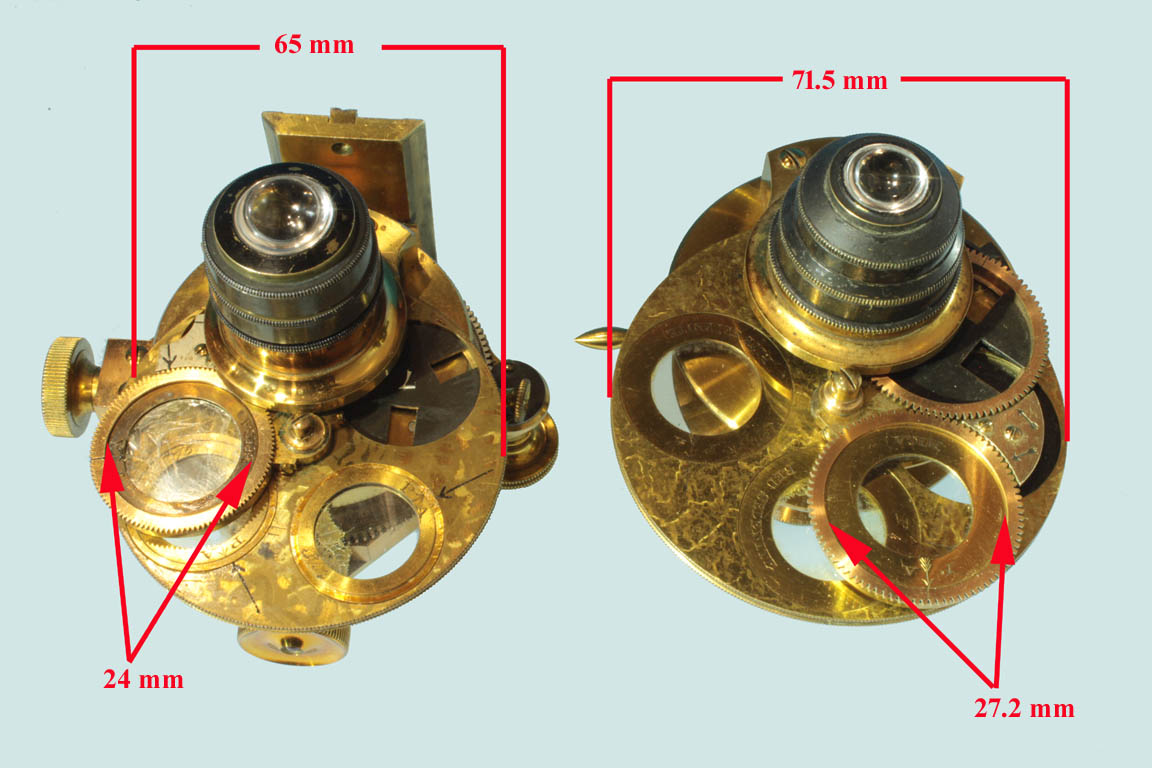
In order to work smoothly with different models, Swift did make small adjustments or adaptations. In that regard, it is worth noting that the diameter of the large wheel and the diameter of the inserts as well as the diameter of the condenser optical part were larger in the model for the large Challenge and Paragon microscopes. Whereas the large wheel of the condenser carrying the inserts in the Perry Arm microscope is about 65 mm in diameter, in the later version made for the large Challenge or Paragon, it is 71.5 mm. The inserts were 24 mm in the model supplied with the Perry Arm microscope, but 27.2 mm for the larger Challenge and Paragon models.
SUMMARY:
1868: Hall Condenser first produced by Swift.
c. 1871: Slide of dark ground stops on the Hall Condenser replaced by a lever-operated group of similar stops.
1874: The new Swift Universal condenser first made.
1910: Optics of the Swift Universal condenser upgraded to include the Paragon condenser.
1911: Hall condenser no longer offered in the Swift catalog.
1913: Last year that Swift catalogs listed the Swift Universal Condenser?
SOURCES
Nelson, E.M. (1912) On Methods of Illumination. J of Quekett Microscopical Club pp 289-299.
The Swift Catalogs












